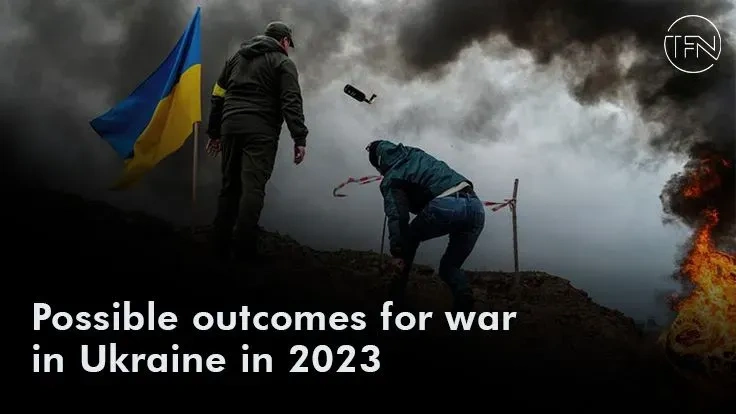
The conflict in Ukraine is poised to enter its second calendar year. A variety of military professionals was asked how they anticipated the ground situation would develop in 2023.
If so, how could it be addressed this year—on the battlefield or at the negotiating table? Or does it possibly continue until 2024?
Any country on the vast Eurasian steppes that tries to invade another will eventually have to spend the winter there.
While the invasion is sliding backward on the ground, Vladimir Putin is digging his forces in for the winter in preparation for a new Russian attack in the spring.
Although both sides need a respite, the Ukrainians are more equipped and motivated to continue, therefore we may expect them to do so, at least in the Donbas.
The area near Kreminna and Svatove is very close to seeing a substantial breakthrough, which would force Russian soldiers to retreat 40 kilometers to their next logical defensive line, not far from where their invasion began in February.
When the payoff is so great up front, Kyiv won't want to quit. However, after Kherson's return, Ukrainian offensives in the southwest could stop.
One could find it too difficult to cross to the east bank of the Dnipro River to exert pressure on Russia's fragile rail and road connections into Crimea. But it's difficult to completely rule out the possibility that Kyiv may suddenly unleash a new offense.
There is no choice but to continue the fighting until the destiny of those further Russian men is determined on the battlefield.
The only other option is a weak, transient ceasefire.
The military and nation of Ukraine displayed a zeal, perseverance, and courage that is unparalleled in the annals of modern conflict.
However, Ukrainians pay a price in blood.
Ukraine will triumph when NATO can provide a fresh, revolutionary package of military assault weapons at a rapid enough rate (tanks, planes, long-range missiles).
It will be decided to accept Russian capitulation in formal technical discussions after the overwhelming Ukrainian victory on the front lines.
The USA, the UK, and Ukraine will build a new system of international security.
Vladimir Putin believed that other countries would not take any meaningful action and that Ukraine would just accept the actions of its more powerful neighbor.
This grave mistake of judgment has led to a protracted fight with no obvious end.
The winter will be difficult because Russian attacks on Ukrainian infrastructure will try to weaken the spirit and resolve of a population that has already suffered great harm.
There is little chance of bargaining.
The human and material costs of the fight might weaken the resolve of the Russian political elite.
This is how earlier confrontations, like the one in Vietnam for the United States or Afghanistan for the Soviet Union, ended when miscalculation played a significant role.
However, this is only achievable if the West continues to back Ukraine despite growing domestic worries about the cost of the conflict.
Sadly, this will still be a protracted battle for survival on the political, economic, and military fronts.
According to experts, Ukraine currently has the upper hand and will surely win this fight, most likely in 2023, even if it is too soon to plan a victory party in Kyiv.
Things could go more slowly over the winter as a consequence of all the winter gear from the UK, Canada, and Germany coming, but there is no doubt that Ukraine's forces will be more prepared to manage the situation than Russia's.
By January, Ukraine could be prepared to launch the campaign's last phase, the liberation of Crimea.
When the military professionals take into account the persistence of the Ukrainian people and army, as well as the steadily strengthening logistical situation for Ukraine, they can only forecast a Russian defeat.
This verdict was primarily made possible by Russia's disengagement from Kherson.
Since all exits to Crimea are now within Ukrainian weaponry's range, the Ukrainian people will profit psychologically, the Kremlin will suffer great humiliation, and the Ukrainian military will gain a key tactical advantage.
The remaining time allows the Russians to launch an attack while using the men that were made available as a result of Kherson's withdrawal.
The Luhansk and Donetsk regions will stay under Russian control, but it is less likely that Russia will achieve a decisive triumph, such as a march from the south to Pavlograd to encircle the Ukrainian forces in the Donbas.
It appears more probable that current tactics, including those used in the Bakhmut and Avdiivka sectors as well as the prospective application of the same tactics in the Svatove-Kreminna region, will be maintained.
By continuing to attack Ukrainian energy infrastructure and other targets, this attrition-based war strategy will be completed.
Significant Ukrainian forces were also liberated after a Russian pullback from Kherson.

